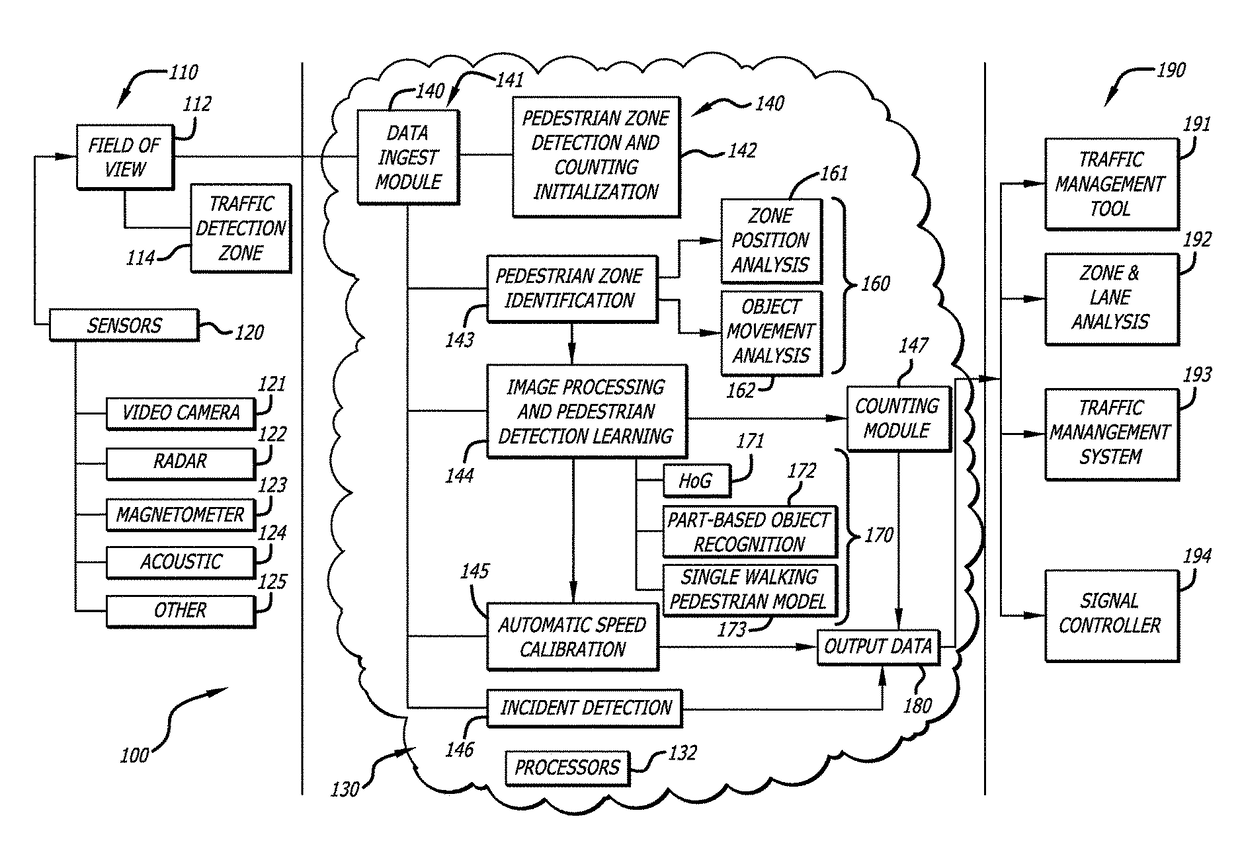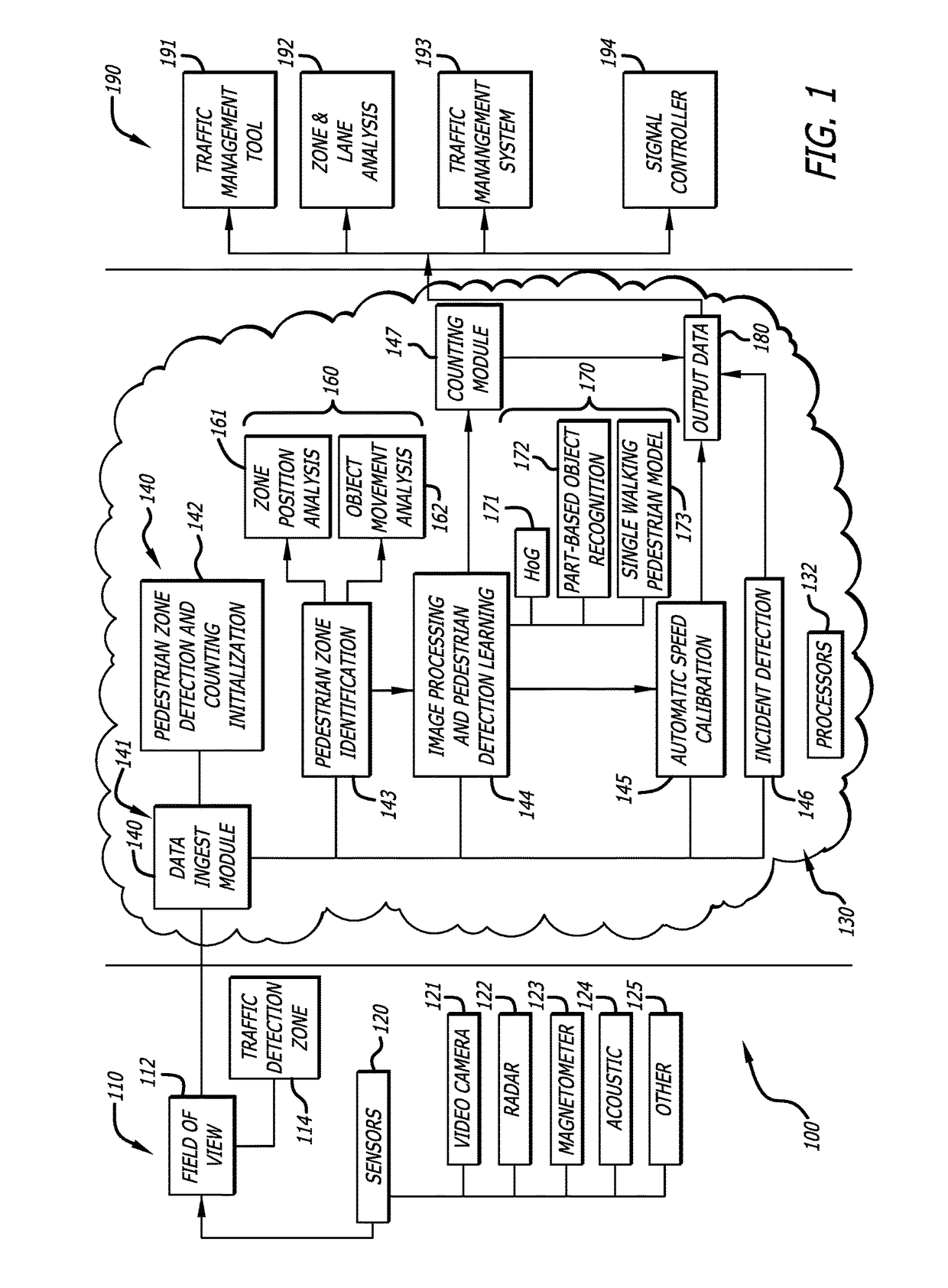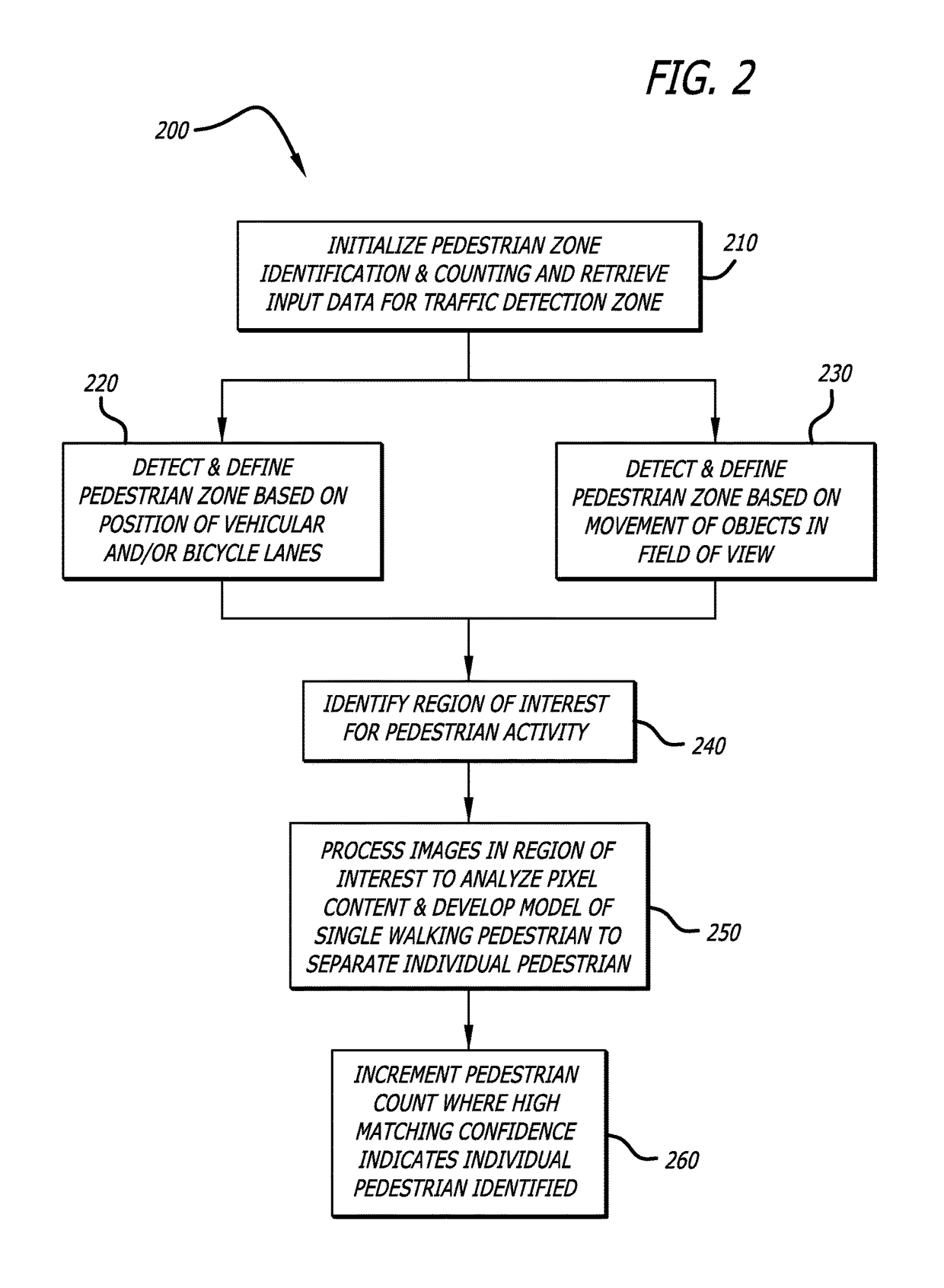Pedestrian tracking at a traffic intersection to identify vulnerable roadway users for traffic signal timing, pedestrian safety, and traffic intersection control
a technology for pedestrians and intersections, applied in the field of traffic detection, can solve the problems of no way of identifying between different types of vehicles, no current method of automatic count and data collection, etc., and achieve the effect of improving emergency response and efficient intersection performan
- Summary
- Abstract
- Description
- Claims
- Application Information
AI Technical Summary
Benefits of technology
Problems solved by technology
Method used
Image
Examples
Embodiment Construction
[0025]In the following description of the present invention reference is made to the exemplary embodiments illustrating the principles of the present invention and how it is practiced. Other embodiments will be utilized to practice the present invention and structural and functional changes will be made thereto without departing from the scope of the present invention.
[0026]FIG. 1 is a system diagram illustrating elements of a pedestrian tracking and counting framework 100, according to one aspect of the present invention. The pedestrian tracking and counting framework 100 is performed within one or more systems and / or methods that includes several components, each of which define distinct activities for defining an area used by pedestrians 102 in a traffic detection zone 114, and accurately counting pedestrians 102 in such an area, for traffic intersection control.
[0027]FIG. 5-7 are exemplary screenshot images 111 of a field of view 112 in a traffic detection 114. In the exemplary ...
PUM
 Login to View More
Login to View More Abstract
Description
Claims
Application Information
 Login to View More
Login to View More - R&D
- Intellectual Property
- Life Sciences
- Materials
- Tech Scout
- Unparalleled Data Quality
- Higher Quality Content
- 60% Fewer Hallucinations
Browse by: Latest US Patents, China's latest patents, Technical Efficacy Thesaurus, Application Domain, Technology Topic, Popular Technical Reports.
© 2025 PatSnap. All rights reserved.Legal|Privacy policy|Modern Slavery Act Transparency Statement|Sitemap|About US| Contact US: help@patsnap.com



